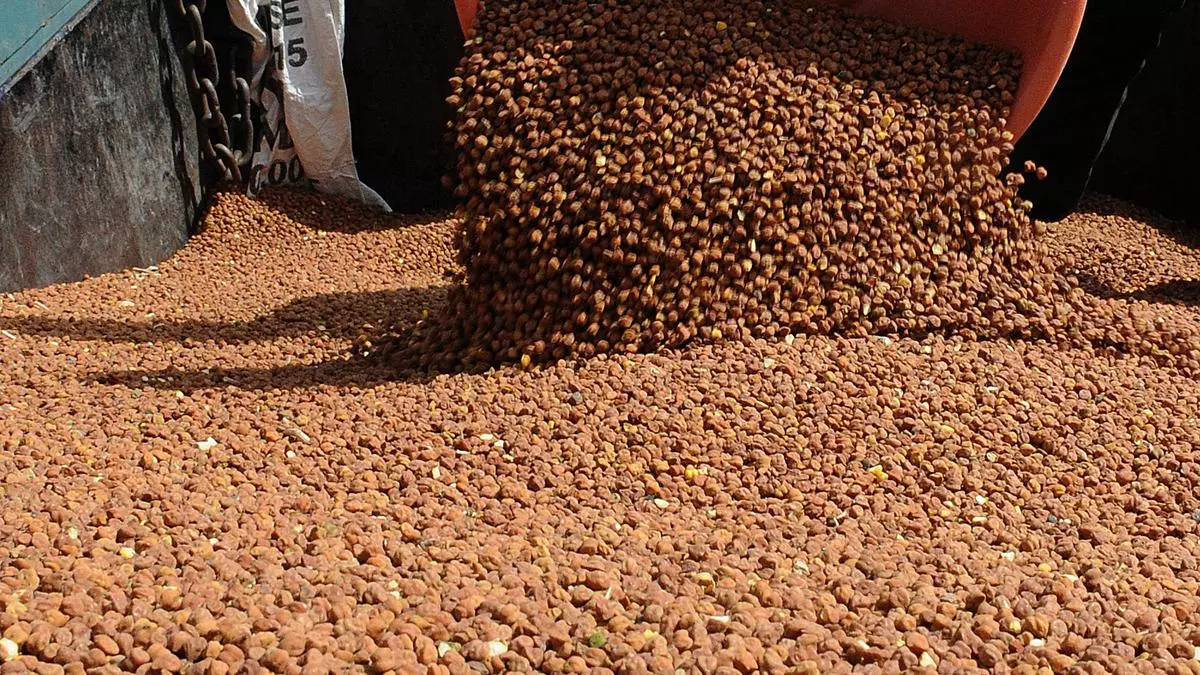Chana tops ₹7,000 mark in Delhi market on poor arrivals
After a gap of almost two years, chana prices in Delhi, a large consuming market, have crossed the ₹7,000 per quintal mark on Thursday on weak arrivals and lower than expected crop.
On Thursday, the Madhya Pradesh variety of chana was sold in the Delhi market in the range of ₹7025-7050 per quintal, while the Rajasthan line of chana ruled in the range of ₹7075-7100 per quintal, said Rahul Chauhan of IGrain India.
On May 4, when the Government removed the import duty on chana, the prices in Delhi traded around ₹6,350 levels for the Rajasthan variety and ₹6,325 for the MP variety. Since then prices have moved up by over a tenth.
Lack of stocks
Factors such as lower-than-expected domestic crop, weak market arrivals and demand from the trade and the possibility of farmers holding back their produce have driven up prices.
“There is a scarcity of chana and market arrivals are poor. There is not much stock with the trade. The crop seems to be much lower than what the Government had estimated,” said Bimal Kothari, Chairman, India Pulses and Grains Association, commenting on the rise in prices.
As per the second advance estimates, the production of chana during 2023-24 was seen lower at 121.61 lakh tonnes, down from the previous year’s 122.67 lakh tonnes. However, the trade feels the crop size is much lower than the Government’s estimates.
The Government has already allowed import of yellow peas at zero duty and has recently removed the import duty of chana to boost the domestic supplies and keep prices under check. “The entire demand of chana cannot be substituted by yellow peas,” Kothari said.
Bullish global market?
Chana constitutes a significant portion of the India’s pulses basket. Following the removal of import duty in India, the chana or desi chickpea prices in Australia have moved up by about $100 per tonne, Chauhan said. Lower stocks in producing countries such as Australia and Tanzania are also contributing to the bullish trend.
“There is a strong possibility that the international market will remain bullish until the new crop arrives in Australia by September,” Chauhan said.
Following a shortfall in domestic production across categories of pulses, the Government has opened up the imports to boost supplies and contain the price rise. India’s pulses imports has shot up to $3.74 billion during financial year 2023-24, registering a 93 per cent growth over previous year’s $1.94 billion.
